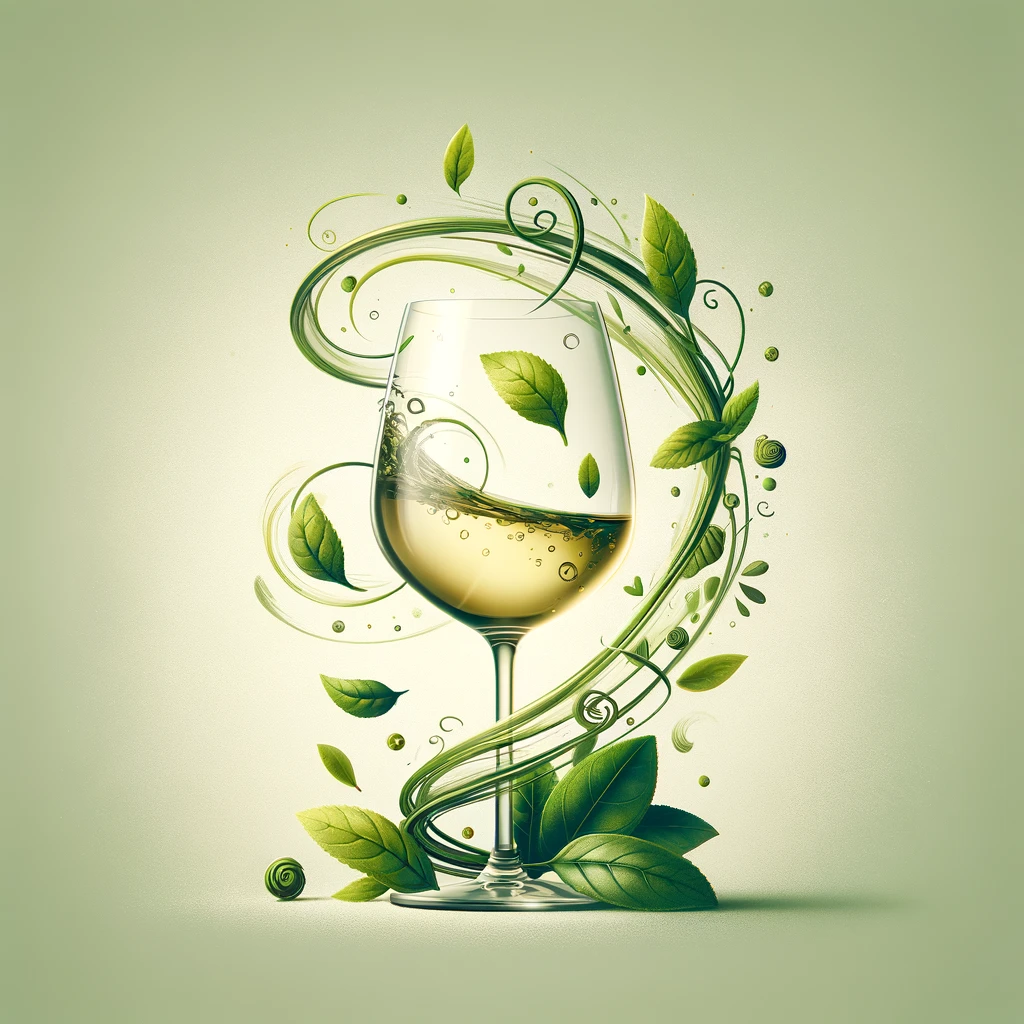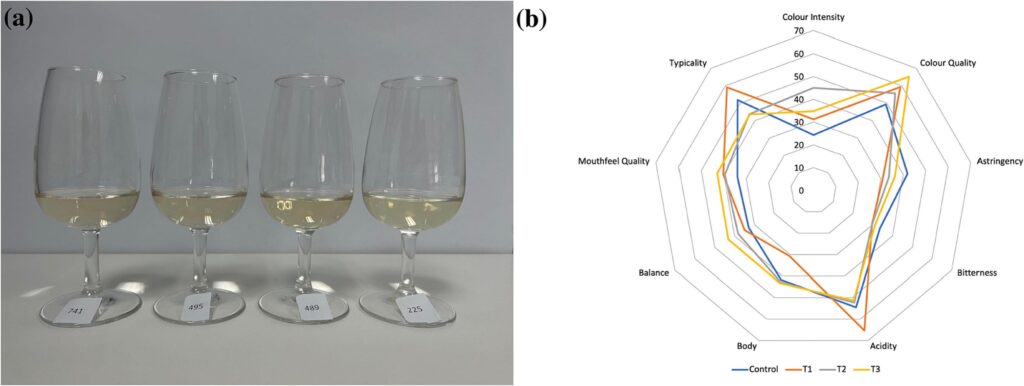Introduction
Sulphur dioxide (SO2) has been widely utilised as a preservative in winemaking since the 18th century. Its primary functions include regulating yeast populations, inhibiting the growth of harmful yeasts and bacteria, and acting as an antioxidant, thus preventing wine oxidation and preserving its quality. However, its use has certain drawbacks such as causing aroma defects, health issues such as bronchoconstriction in sensitive individuals, and potential carcinogenic effects. Consequently, the World Health Organisation recommends restricting or eliminating SO2 in food processing, and regulations governing its use in wines have become more stringent. There is a growing interest in identifying alternatives to SO2 in winemaking. Physical techniques, such as pulsed electric fields and ultraviolet methods, show potential, but have certain limitations. Chemical alternatives, including lysozyme, chitosan, and other compounds, have also been investigated; however, they can be allergenic, expensive, and may negatively affect the sensory qualities of wine. Consequently, these alternatives are not always sufficient as substitutes for SO2.
Recently, there has been a growing interest in natural alternatives, particularly plant-based extracts that are rich in phenolics, which are known for their antimicrobial and antioxidant properties. Among these, green tea extract, which is rich in flavan-3-ols and other phenolics, has emerged as a promising candidate. Although not extensively studied in the context of wine production, some studies have suggested that it could be a viable replacement for SO2. The unique phenolic content of green tea extract may affect the stability of wine colour and mouthfeel. This study examined the use of green tea extract in the production of Sauvignon Blanc wine and compared it with traditional treatments involving the use of SO2. This study focused on the effects of the extract on wine colour stability, phenolic composition, antioxidant capacity, and sensory attributes. This study represents a pioneering effort in the field of investigating the use of green tea extract in wine production.

Methodology
The methodological approach adopted in this study encompasses a comprehensive process covering several dimensions. High-quality chemicals and standards, including catechin and epicatechin, were procured for this experiment. The tea extract was prepared by meticulous powdering of green tea leaves and conducting an infusion, which was subsequently subjected to centrifugation and freeze-drying, resulting in an extraction rate of 23 %. The conventional analysis of wine composition involves the precise measurement of various parameters, such as degrees Brix, pH, and sulfur dioxide levels, using specialised equipment. The winemaking process for Sauvignon Blanc commenced with the harvesting of grapes in Marlborough, New Zealand, followed by the treatment of the grapes with potassium metabisulfite and other agents during processing. After fermentation, the wine underwent filtration and stabilisation before further treatment.
Different treatments, including various concentrations of green tea extract and potassium metabisulfite, were added to the wine samples, which were then stored until further analysis. Colourimetric analyses were conducted to assess the colour, phenolic index, tannin concentration, and antioxidant activity. High-Performance Liquid Chromatography (HPLC) was used to determine the specific phenolic compounds present in the tea extracts and treated wines. The wine was done after two weeks and five months of bottle aging to analyse its composition and sensory attributes. A sensory panel of ten wine professionals evaluated the wines, focusing on characteristics such as colour intensity, astringency, and overall mouth-feel quality. Finally, statistical analyses were performed using tools such as R Studio and Microsoft Excel, employing ANOVA tests and correlation matrices to interpret the data. This comprehensive approach aimed to rigorously examine the effects of green tea extract as a potential substitute for sulfur dioxide in winemaking by combining analytical and sensory evaluation methods.

Figure: Wine treatments (C, T1, T2, and T3, left to right) at the end of five months bottle aging (a), and their sensory ratings obtained for each attribute (b) from the sensory panel
Results and Conclusion
This study examined the effects of green tea extract on the properties of Sauvignon Blanc wine, focusing on its colour, phenolic makeup, and antioxidant capacity. The results showed that the extract, when applied at various concentrations, affected wine colour, phenolic composition, and antioxidant capacity. The green tea extract was rich in monomeric phenolic compounds, particularly (−)-epigallocatechin gallate, which significantly contributed to the antioxidant properties of wine. The addition of green tea extract resulted in an increase in the total phenolic index and antioxidant capacity of wine, which persisted for five months after bottling, although there was a slight decrease over time. The research also found that while green tea extract altered the wine’s chemical profile, it did not significantly affect its overall sensory attributes, such as colour and mouthfeel. Despite the increase in colour absorbance and phenolic content due to green tea extract treatment, the wine’s sensory qualities remained unaffected. This suggests that green tea extract could be a suitable alternative to sulfur dioxide in winemaking, enhancing the wine’s resistance to oxidation without compromising its sensory properties.
Research findings indicate that the utilisation of green tea extract can enhance the phenolic content and antioxidant capacity of wine while maintaining its sensory profile. However, the study also pointed out that the increased phenolic content due to green tea extract may also increase the wine’s susceptibility to browning under accelerated aging conditions. This suggests that, while green tea extract may be beneficial in preserving wine, its long-term effects on aging and potential browning should be considered. In contrast, sulfur dioxide was found to be more effective in protecting wine against colour changes and phenolic reactions. Overall, this study emphasises the potential of green tea extract as a preservative in winemaking. Further investigation is needed to fully understand the long-term implications of using green tea extracts, including their effects on aroma, flavour, and aging characteristics.
Read all at: Yang, Y., Ye, Z., Qin, Y., Pathirana, S., Araujo, L. D., Culley, N. J., & Kilmartin, P. A. (2024). Effects of post-fermentation addition of green tea extract for sulfur dioxide replacement on Sauvignon Blanc wine phenolic composition, antioxidant capacity, colour, and mouthfeel attributes. Food Chemistry, 138976.https://doi.org/10.1016/j.foodchem.2024.138976

